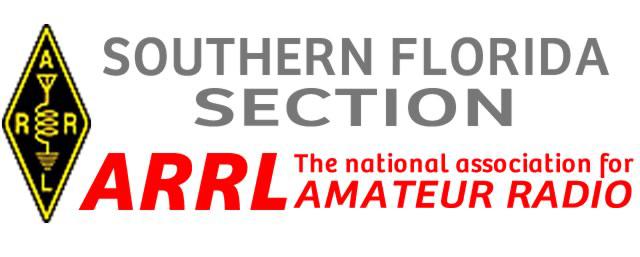SB SPCL @ ARL $ARLX004
ARLX004 Armed Forces Day Crossband Military/Amateur Radio
Communications Test is May 13
ZCZC AX04
QST de W1AW
Special Bulletin 4 ARLX004
From ARRL Headquarters
Newington CT April 27, 2017
To all radio amateurs
SB SPCL ARL ARLX004
ARLX004 Armed Forces Day Crossband Military/Amateur Radio
Communications Test is May 13
The US Army, Air Force, Navy, and Coast Guard will sponsor the
traditional military/amateur radio communication tests on Saturday,
May 13 to mark the 66th annual Armed Forces Day (AFD). Armed Forces
Day is May 20, but the AFD Crossband Military-Amateur Radio event
will take place a week earlier in order to avoid schedule conflicts
with those attending Hamvention.
Complete information, including military stations, modes, and
frequencies, is available on the US Army MARS website at,
http://www.usarmymars.org/home/announcements .
The annual celebration is a unique opportunity to test two-way
communication between radio amateurs and military stations
(authorized under Part 97.111 of the Amateur Service rules). It
features traditional military-to-amateur crossband SSB voice, CW,
practice using legacy interoperability waveforms, and the
opportunity for participating hams to utilize more modern military
modes, such as MIL-STD Serial PSK and Automatic Link Establishment
(ALE). Military stations and Amateur Radio stations are authorized
to communicate directly on certain 60-meter interoperability
channels - 5,330.5, 5346.5, and 5,371.5 kHz.
These tests give Amateur Radio operators and shortwave listeners a
chance and a challenge to demonstrate individual technical skills
and to receive recognition from the appropriate military radio
station. QSL cards will be available for stations successfully
contacting participating military stations.
The Armed Forces Day message will be transmitted via Military
Standard radioteletype modes (MIL-STD 188-110A/B). Software is
available to demodulate the military serial PSK waveform, and
detailed instructions can be downloaded from,
http://www.n2ckh.com/MARS_ALE_FORUM/MSDMT.html
. Utilizing this mode with soundcard equipment can be challenging;
review the instructions carefully.
A short practice transmission will be sent at 1930 and 2330 on May
6, 7, 10, and 12 on 13.506.5 MHz USB and 17.443.0 MHz USB.
Military FSK is Baudot at 850 Hz, 75 baud, low mark, and 2000 Hz
center. Most RTTY programs can be set to decode this mode. To
achieve low mark while receiving in USB, select reverse shift.
QSL cards are available for individuals that receive the Armed
Forces Day test message. To receive a card, copy the printed text of
the test message as received from the military station, and include
it in your report. No attempt should be made to correct possible
errors.
Stations copying Armed Forces Day messages transmitted from US Army
and US Navy stations and requesting a QSL card, can complete the QSL
report form online at, http://www.usarmymars.org/ . Stations copying
the Armed Forces Day message transmitted from US Air Force stations
and seeking a QSL card should send a request to Armed Forces Day
Celebration, Chief, Air Force MARS, 203 W. Losey St, Scott AFB, IL
62225.
Include a transcript of the received text, time observed, frequency
observed, military station call sign, your full name and Amateur
Radio call sign (if applicable), full mailing address (including ZIP
code).
Stations with Automatic Link Establishment (ALE) capability can
contact a military station on specific half duplex crossband
channels established for this purpose. ALE is a selective calling
and linking method utilized by government, military, and amateur
radio communications. Military stations will scan and receive
certain amateur HFLINK ALE frequencies and transmit on the
corresponding military ALE frequency. Military stations will also
transmit ALE station identification (soundings) on each military
frequency at 30- to 90-minute intervals. Amateur stations may scan
military frequencies and monitor the soundings to build the LQA
database or select the channel manually. Amateur stations will call
military stations using ALE selective calling on one of the paired
cross band channels.
NNNN
/EX
Armed Forces Day Crossband Military/Amateur Radio Communications Test is May 13
- Recent
-
Happy Birthday to the FCC.
- Feb 23, 2018 -
K9EE awarded Certificate for over 12 years of volunteer service to Skywarn
- Feb 22, 2018 -
Web Site Updated
- Jan 28, 2018 -
EC appointed for Miami-Dade
- Jan 23, 2018 -
Upcoming events
- Nov 26, 2017
Archives
- February 2018 (2)
- January 2018 (2)
- November 2017 (1)
- October 2017 (2)
- September 2017 (3)
- August 2017 (6)
- July 2017 (2)
- June 2017 (6)
- May 2017 (5)
- April 2017 (6)

